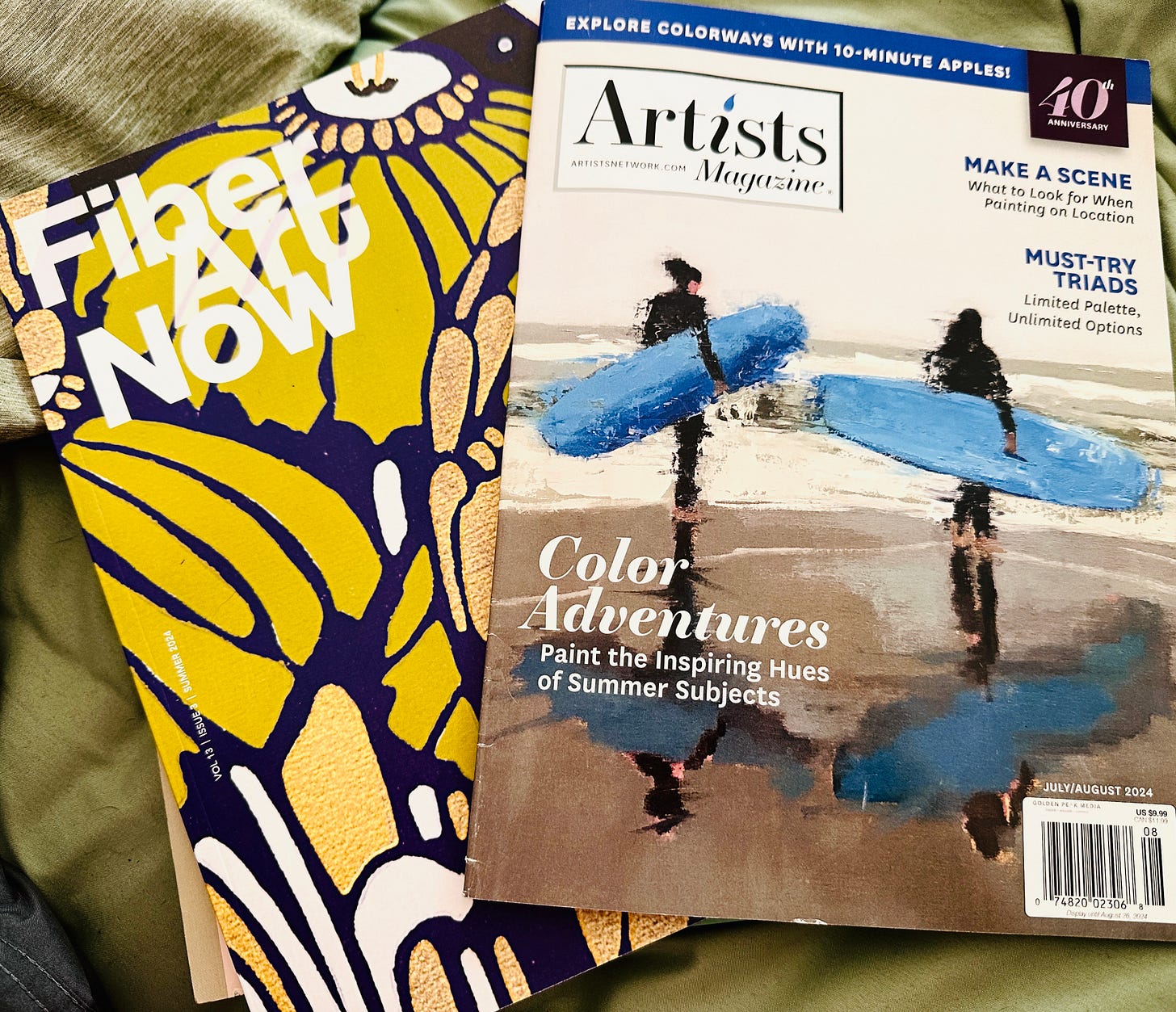Found Psychology in Artists Magazine Summer '24
“The access point for her new work became the embroidered word, as she began stitching 75 pieces of red satin with words associated with healing.” - Doreen Manning about Joetta Maue
In Spring, I shared with you how much I love print magazines, and how much I enjoy finding inspiration related to my passion for “where art meets psychology” in various places including inside of magazines. I will read a magazine from cover to cover and make notes about all of the things that relate to this.
I don’t know if I have a particularly great way to articulate the value that I find in this activity. Sometimes it turns into something obvious - I discover someone’s work or thoughts that I want to explore further or I am compelled to write an essay on a theme I notice. But usually it’s more subtle. It’s the refilling of my creative well, as they say, a following of curiosities. It nourishes me and then marinates within me and certainly flavors what I put out later, whether I’m consciously aware of exactly how it does so or not.
Hat tip to
of for some really great thoughts on “curiosities” that keep coming back into my mind. Here’s a small bit but do check out the whole curiosities series for lots more thoughts on this.“I am still fascinated by the idea of collecting our own curiosities in life. These curiosities are not limited to physical objects only - they can include emotions we’ve experienced, thoughts we’ve had, or even a beautiful tree we’ve seen. They are things we treasure and keep in our hearts, minds, souls, and perhaps even in our homes. We can relive these curiosities by sharing them through storytelling and art or by keeping them to ourselves in a secret place, stored safely for whenever we need cheering.” -
So in Spring, I shared with you about music and mental health in Revolver Magazine from that season. And today, I’m going to share with you the references I found curious in Artists Magazine (July/August 2024).
Artists Magazine: Color Adventures
The theme of this issue of the magazine is all about color. Plenty has been written about the psychology of color. In fact, I’ve written plenty about this over the years starting, probably, with how when crochet first began to pull me out of depression, I found myself literally seeing color again in yarn and fabric. So it’s no surprise I found lots of psychology stuff inside this issue.
“Drawing with Thread” by Doreen Manning about Joetta Maue
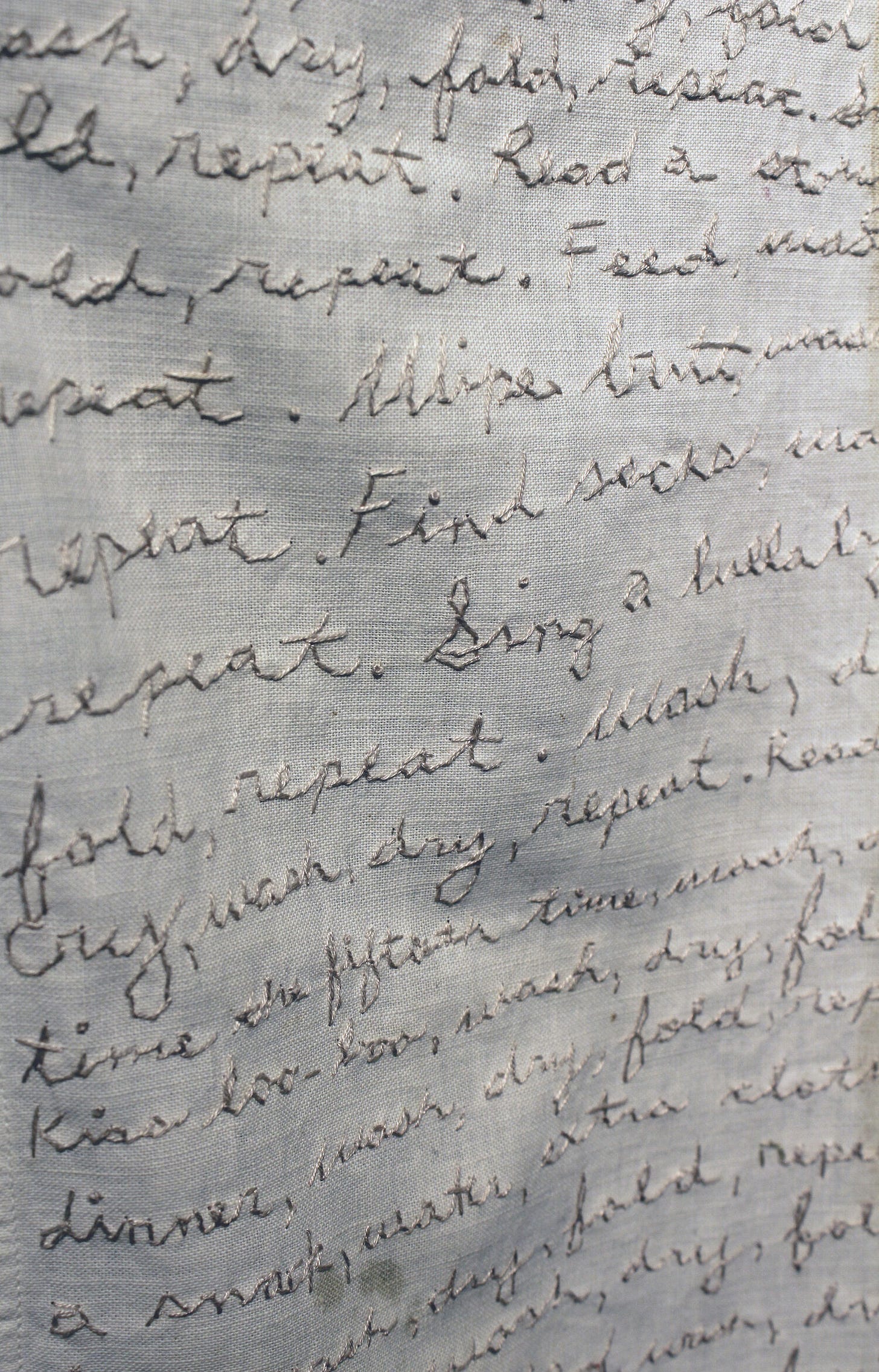
This is the first article in the magazine and it drew me in instantly. Maue does these incredible embroidery pieces that utilize text and photographic-inspired images to evoke emotion and connect to a women’s lineage of handcrafting. I would have loved reading this article without the references to psychology but I found two and both captured my interest:
1. “Upon graduation, Maue began to feel borderline traumatized.”
Maue had studied large format photography in school but upon graduation she didn’t have access to the studio and space and equipment required for that kind of work. As you may know, I’m intrigued by how our personal pscyhology intersects with medium choices and changes:
So, that caught my interest. Maue went from working large through “feeling confused and stuck” to working tiny - switching to embroidery - and then finding ways to take embroidery up to a large scale. The article explains the various stages of this process which includes lots of fascinating information about the materials and medium.
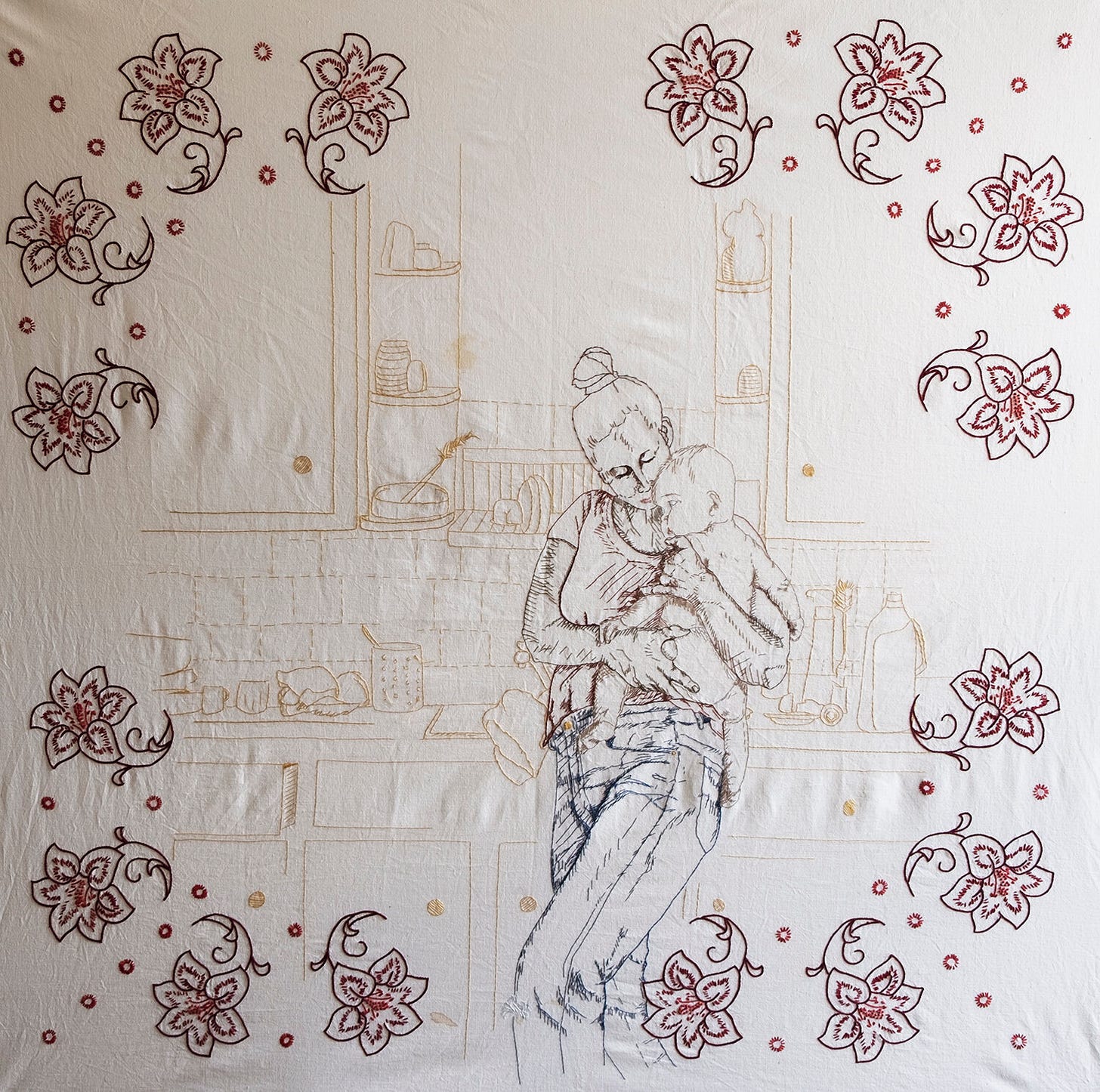
2. “The access point for her new work became the embroidered word, as she began stitching 75 pieces of red satin with words associated with healing.”
Wow. The artists discusses the healing nature of the meditative aspect of stitching which “helped her art unfurl at a slow but satisfying pace.” The portability allowed working on it mindfully while riding public transportation. The stillness allowed her to connect with “a more female-dominated medium, and more representative of the feminine voice.”
I work diligently to bring light to the complex relationships between art and psychology in a way that I hope benefits other creatives. The work requires support.
“It’s the Little Things” by Amy Leibrock about Remington Robinson
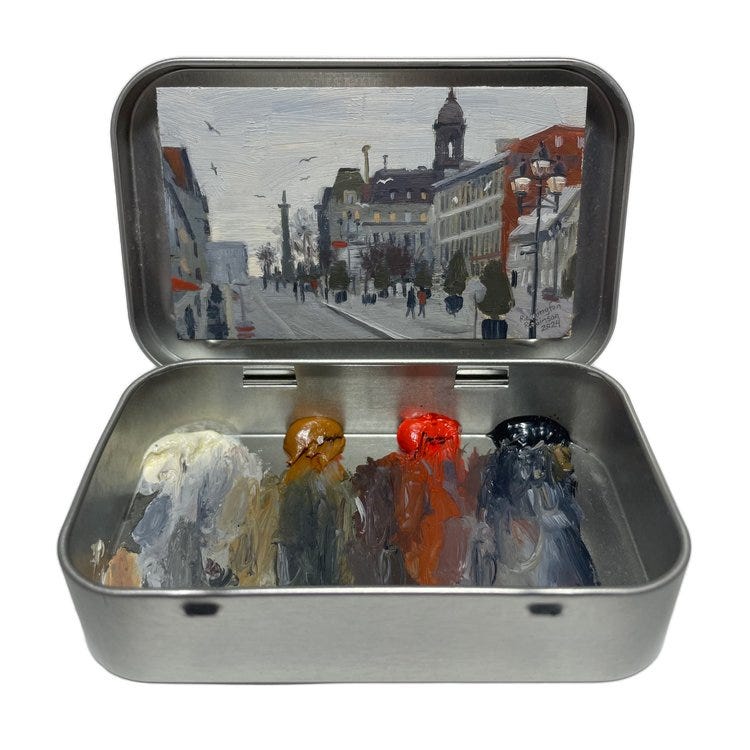
I was intrigued to see another article about playing with scale. This is about an artist who paints beautiful scenes inside of small Altoids tins although at one time he painted large-scale murals. Some of the insights shared about that make me think about how knowing ourselves (our psychology, mental health, preferences, needs, strengths, limitations, triggers, whatever you want to call it) can help shape our choices in our creativity.
He shares, “Painting realism requires a lot of sitting still, and I wasn’t very good at that.” He is someone who wants to be active, to be outside, so painting small and portable and on the go makes sense.
Notably, he also mentions that he thought about the idea of painting in a tin then dismissed it as a dumb idea then saw someone else doing it and asked if he could copy the idea. We don’t always trust our own instincts.
And my favorite part of the article is a description of how this practice is a form of meditation. “When I’m painting, I’m concentrating on the subject, and the rest of the world can fall away … It’s one of the most healing things.” He goes on to express the hope that his work can inspire others “to get into meditation through painting” and that maybe this could even change the world.
I believe in this. I believe art heals. I also believe, as you likely know by now, that it’s complicated. What if he had kept trying to paint large scale murals indoors all of the time, a medium and method not working for his personal psychological makeup? Would it be healing? Perhaps not. It’s complicated. And that’s why we must stay in tune with ourselves and adapt our creativity accordingly.
“Color Triads That Make My Day” by Shari Blaukopf
This is an article about literally taking three colors at a time out to do painting. But I found that the headlines for each of the tips that Shari offers actually also feel like mental health advice to me. Here they are; do you agree?
“Limiting the palette won’t limit the color.”
“Let one color dominate.”
“Modulate the color intensity.”
“Experiment with new color triads.”
“Choose seasonal colors.”
“Tone down the color intensity in winter.”
“Add bright spots for variety.”
I can think of so many different ways that these apply. Sometimes you have to make your world smaller in order to be mentally okay but “limiting the palette won’t limit the color.” Sometimes we have to live with the seasons and "tone down the intensity in winter” in order to be mentally well. This makes me think about how valuable it might be to look at the technical lessons that we find true in our creative work and see how they might metaphorically apply to our mental health.
“Into the Water” by Ruth Rodgers about Jessica Masters
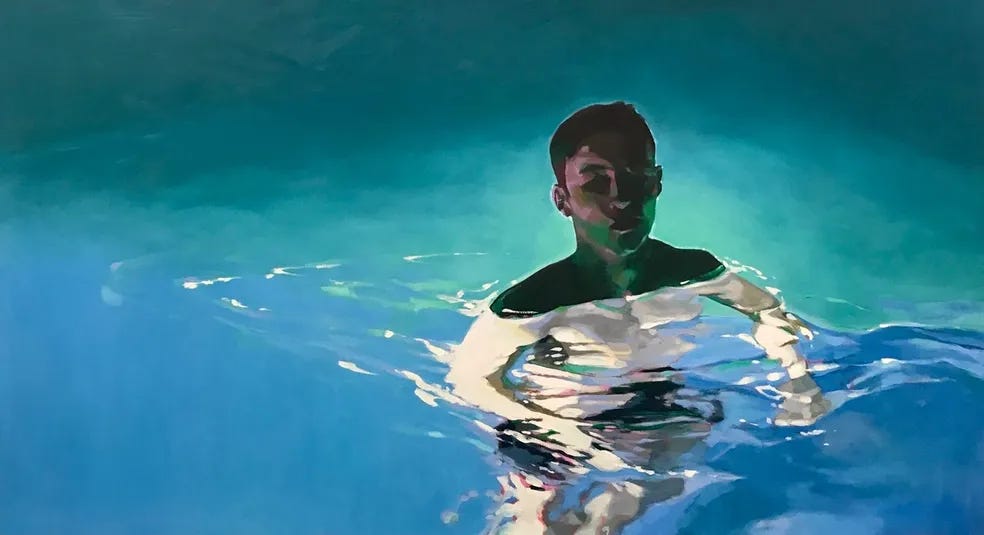
This is a beautiful article about the artist’s “expressive, nostalgia-inducing paintings of figures in water.” I think that there’s something primordial about this immersion in water, something womb-like, something that always ties back to human psychology in some deep way.
The most direct mental health mention in the article is the artist sharing how it was difficult at first to create work rooted in the self and the family and the life she was living. It made her feel vulnerable, and it caused her confidence to falter, and she would “freeze up.” She shares,
“Once I was able to see that my experience in life were my art, I started to feel comfortable expressing myself. I’ve developed the skills needed to tell my story.”
Other hints at psychology in this article:
The artist’s desire for the work to inspire people to slow down and connect to their own memories.
“I paint to gain perspective and insight.” The artist talks about capturing a moment in time.
There is excellent information about the intentionality of color choices with awareness that “color could make the viewer feel something.”
Teaching has helped the artist in her own process, particularly in terms of inspiring her “to be more curious in her own work.”
The latter reminds me of an idea from my psychology program which is essentially that a therapist doesn’t have to have all of the answers but just has to be a step or two ahead in their own process of where the client is at in theirs in order to be able to offer empathy, validation, and guidance.
“The Story Behind a Painting: Martin Greenfield” by David Jon Kassan
The artist wrote this essay about the start-to-finish process of a portrait painting which is one of a series he did of life-size portraits of Holocaust survivors. There’s so much to be said about intergenerational trauma and collective trauma and healing through celebrating survivors. What the artist says here, specifically, is about how the subconscious often guides our artistic choices.
“I feel deeply that the art we create is a biographical representation of who we are. Even though we, ourselves, may not be the subject, we’re guided by unseen forces to paint places and people we subconsciously yearn to understand better.”
As someone who often writes to understand my thoughts, this resonates. He goes on to say that by painting portraits of other people, he connects to shared humanity, and that this then inspires his own personal growth process.
The portrait he shares is of a survivor who also used handcrafting to heal. Martin Greenfield became a tailor. The author shares a memory from Greenfield:
“Despite enduring a beating for tearing a Nazi’s shirt, he later repaired the shirt and wore it beneath his prison uniform. By doing this he realized the transformative power of attire in the struggle for survival.”
More Art+Psychology in Artists Magazine
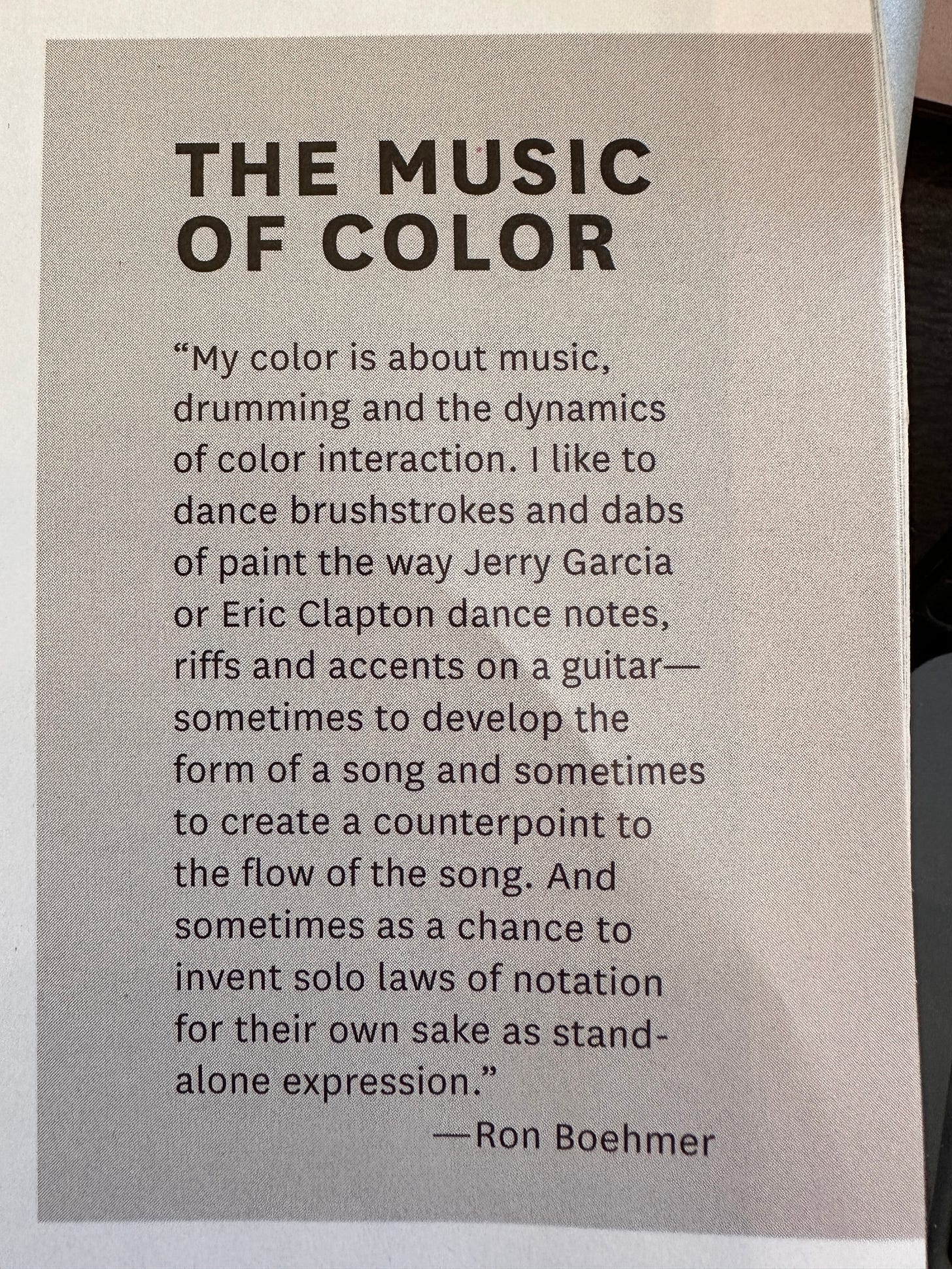
Carol Marine writes about a creative exercise for drawing a bunch of apples in different colors in ten minutes. The relevant part here is the emphasis about how artists need to consistently practice. Marine quotes a teacher who said, “If you’re always performing, you’re never practicing.” And I think there’s something valuable in that for artists working today since we are constantly publishing and promoting and sharing on social media … there can be a lot of value in keeping a sketchbook or journal or the first parts of a project just for yourself, just as practice, knowing you’re not performing it for anyone else in the world. When we always expect eyes on our work, it alters it; when we just practice for the sake of it, our minds are sometimes freed from the neuroses and attachments of that.
“What can an artist do to develop color confidence?” A bunch of people answered and the answers are interesting for the content that answers the question but it’s the question itself I’m interested in here. What might cause a lack of color confidence in the first play? Perfectionism related to anxiety. Imposter syndrome? Fear of failure? Stuckness from early criticism? Borderline thinking about there being a “right” and “wrong” way?
Van Gogh is quoted in an article by Courtney Jordan. The article is about how to use a viewfinder and the quote is from a letter in which the artist describes how he has made one. It’s not directly related to psychology but whenever I tell anyone that I write about art and mental health, they invariably mention Van Gogh, so I noticed that mention of him here.
There’s an article by Cynthia Close about Michelangelo’s last years that touches briefly on his mental health. It mentions his struggles with having to create things he didn’t want to in order to pay the bills. And briefly says, “His paranoia, his desire to be seen as a gentleman of high birth and his fear that he was only liked because of his wealth seemed to escalate in his final years.” If I didn’t already know about Michelangelo’s mental health history, lines like this would send me searching for more information.
If you have read this far, remember that it takes a lot of time, effort, energy, passion, and vulnerability to share this work. Our expenses reflect our values, so if you value this work, please subscribe at a rate that works for you. I offer a sliding scale from $10 - $100 per year.




